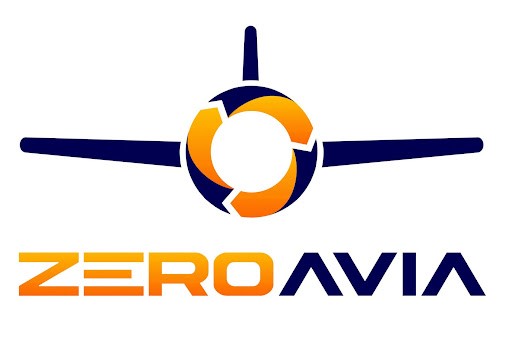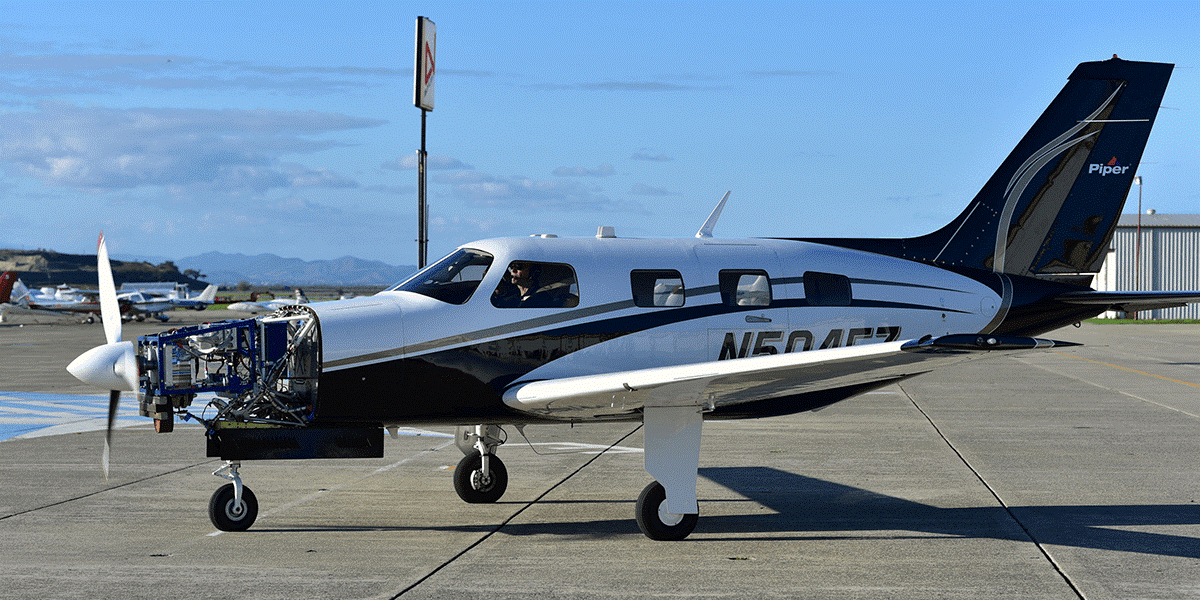ZeroAvia has found a brand-new energy supplier to help power its eco-friendly test flights. The 4-year-old clean aviation startup announced that it had struck a temporary partnership with Octopus Hydrogen in recent weeks. The London-based Octopus will supply its 100% pure hydrogen to ZeroAvia’s U.K.-based R&D center at Cotswold Airport as part of the deal.
“In order to achieve a commercially available, certified zero emission hydrogen-electric aircraft powertrain, we need large amounts of 100% green hydrogen,” said Sergey Kiselev, ZeroAvia’s VP of Europe, in a statement, “and we are pleased to work with a UK-leader in this field. Hydrogen-electric aviation is the only practical path to decarbonizing flight at scale, as well as removing other harmful emissions from aviation that contribute to global warming.”
The fresh supply of green hydrogen comes amid ZeroAvia’s HyFlyer II project. The U.K. government-funded project aims to develop a certifiable 600kW hydrogen-electric fuel cell powertrain to power a 19-seat aircraft 500 nautical miles—roughly the distance from Paris to Barcelona.
“We started Octopus Hydrogen to deliver 100% green hydrogen to those sectors that cannot be decarbonized through batteries alone. Aviation is a perfect use case for green hydrogen, and we are delighted to be supporting ZeroAvia over the coming years with the supply of high pressure, pure, and zero carbon-hydrogen,” said William Rowe, Octopus’ founder, and CEO, in a statement.
Octopus takes its on-demand supply feature pretty seriously. They plan to deliver more than 250 kilograms, or 551 pounds, of green hydrogen per day into ZeroAvia’s mobile refueling unit during the test-run partnership.

The Future Is Bright (Green) for ZeroAvia
With a target of mass-producing its groundbreaking fuel cell technology for use in the commercial aviation sector by 2024, ZeroAvia is zooming into a future where green aviation is the travel industry’s vernacular.
ZeroAvia says it plans to commercialize hydrogen-electric power for aircraft by 2023 for 500-mile long flights in 20-seater planes. And it has even loftier goals than that. By 2027, it plans to have eco-friendly powertrains in commercial flights exceeding 500 miles in aircraft with up to 100 seats. And by 2030, ZeroAvia plans to power 1,000-mile-long flights—or roughly the distance between New York City and Tampa, Florida—in aircraft with 100 seats.
Already, aviation heavyweights have sat up and taken notice. British Airways says it has partnered with ZeroAvia to learn more about moving from its reliance on jet fuel to eco-friendly hydrogen-electric fuel.
And several deep-pocketed investors have poured millions into ZeroAvia. In March, the startup announced it had secured $24.3 million in funding from British Airways, Royal Dutch Shell, and Bill Gates’ $2 billion environmentally-focused venture capital fund, Breakthrough Energy Ventures. Amazon Climate Pledge Fund is yet another high-profile investor. To date, ZeroAvia has netted $74 million in investments, including funding from the U.K. government.
“This new funding will significantly accelerate our path to zero-emission solutions for larger regional aircraft at a commercial scale,” said ZeroAvia CEO Val Miftakhov in a statement. “With many airlines lining up and ready to make the shift to zero emissions, we expect to see wide-scale adoption of this technology.”
The Race to Reach Net Zero
United Nations scientists have long proposed that countries unite in reaching net zero emissions by 2050 as part of the Paris Agreement. The world can only achieve net zero when the amount of greenhouse gas produced equals the amount removed from the atmosphere. Countries and companies across sectors are joining in on the noble environmental pledge to reduce carbon emissions and offset any remaining emissions by capturing the gas with earth-friendly initiatives like planting trees.
Harnessing green energy, defined as clean energy from a renewable source, can help. Whether it is solar, wind, or hydro-powered, the manufacturing process and refining processes must not, by definition, contain any harsh chemical by-products that contribute to the destruction of the ozone or the environment.
Yet, for Miftakhov, 2050 holds another significance. He predicts that left unchecked, the aviation industry could triple its emissions by that year.
The aviation sector contributes an estimated 2.5% of global carbon emissions. But, environmentalists say the aviation industry’s impact on climate change is immeasurable. When aircraft burn dirty jet fuel, they release gases and pollutants like soot and sulfur aerosols. The gases are unfriendly to the ozone and increase global warming.
ZeroAvia flies in the face of relying on those harmful fossil fuels. Thanks to its futuristic hydrogen-electric technology, when its aircraft burns hydrogen, it emits water.
Green energy, like ZeroAvia’s hydrogen-electric powertrain, is renewable; it will not deplete a natural resource. Stabilization of energy prices is another benefit of clean energy. As it is entirely renewable, its availability does not depend on the bioavailability of a finite source like fossil fuel. Perhaps, then, the world will see more affordable airfare prices due to the eco-friendly energy.
The Science Behind ZeroAvia’s Futuristic Powertrain
Clean, green hydrogen is the result of the electrolysis of water. A high electrical current splits the hydrogen from the oxygen; the hydrogen can then be used as a fuel. To ensure that the hydrogen is eco-friendly, it needs to have as small an impact on the environment as possible.
The alternative method of producing hydrogen is a carbon emission nightmare involving burning biomass and coal. The result is hydrogen production that comes at the cost of environmental issues.
The hydrogen-electric fuel cell at the core of ZeroAvia’s powertrain combines hydrogen and oxygen to create electricity, heat, and water. Many in the science community and regulatory boards agree: hydrogen is the future of flight. The CAA and FAA have issued ZeroAvia with experimental certifications that allow it to test and continue through each phase of the project to ensure that take-off happens on time and as expected.

Fueling Global Change
Every time a plane takes flight, mother nature takes a hit. And the numbers of aircraft crisscrossing the sky above us are mind-boggling. According to the FAA’s Air Traffic Organization, it services 16.4 million flights yearly. That’s 45,000 flights per day.
A 2010 study of global flight patterns discovered that short-haul flights, or flights traveling less than 1,000 miles, account for nearly 85% of air travel. That’s where ZeroAvia hopes to create the greatest change.
By significantly reducing the amount of carbon-centric flights that take off and land within 500 miles, the quick flights will tackle some of the most significant contributors to carbon emissions head-on.
Inside ZeroAvia’s History-Making Maiden Flight
ZeroAvia first made history with its hydrogen-electric powertrain-equipped aircraft in September 2020. As part of the HyFlyer I program, a six-passenger seat plane took off from its U.K.-based R&D facility and flew for about 10 minutes.
After completing the history-making flight, the company said that 10 airlines expressed interest in implementing the fuel into their aircraft by 2024. “Our view is that hydrogen-electric technologies are the best in several ways,” adds Miftakhov, “which is why we are focusing on commercializing them.” ZeroAvia says it next plans a 250-mile flight, about the distance from London to Paris, with its clean technology.
Miftakhov is no stranger to clean technology. Before he launched ZeroAvia, he founded eMotorWerks, an electric car battery-charging service. He then sold eMotorWerks to pursue eco-friendly solutions for the aviation sector. It’s a natural career move for Miftakhov, who is also a pilot. His hard work has paid off. ZeroAvia recently landed a spot on Time’s 100 Best Inventions of 2020 list.



 Bitcoin
Bitcoin  Ethereum
Ethereum  Tether
Tether  XRP
XRP  USDC
USDC  Solana
Solana  TRON
TRON  Cardano
Cardano  Lido Staked Ether
Lido Staked Ether  Avalanche
Avalanche  Toncoin
Toncoin